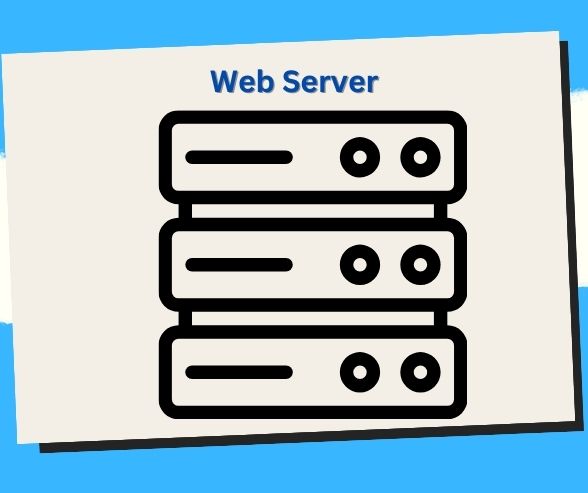
Crack the Code: Strategies for Effective Content Optimization and SEO
Drive organic traffic and boost your online presence with our proven strategies for effective content optimization and SEO.
Unlocking the Secrets of SEO: Guide to Optimizing Content for Search Engines 🚀
In today’s digital landscape, search engine optimization (SEO) plays a pivotal role in driving organic traffic to your website and enhancing your online visibility. By optimizing your content for search engines, you can improve your rankings in search engine results pages (SERPs), attract more qualified leads, and ultimately, grow your business. In this guide, we’ll delve into the intricacies of SEO and provide you with actionable tips and strategies to optimize your content effectively for search engines.
Understanding the Basics of SEO 📊
SEO is the process of optimizing your website and content to rank higher in search engine results for relevant keywords and phrases. Search engines like Google use complex algorithms to evaluate and rank web pages based on various factors such as relevance, authority, and user experience. Effective SEO involves optimizing both on-page elements (such as content, meta tags, and URLs) and off-page factors (such as backlinks and social signals) to improve visibility and drive organic traffic to your site.
Conducting Keyword Research 🔍
Keyword research is the foundation of SEO and involves identifying the terms and phrases that your target audience is searching for. Start by brainstorming a list of relevant keywords and topics related to your business, products, or services. Use keyword research tools such as Google Keyword Planner, SEMrush, or Ahrefs to expand your list and uncover additional keyword ideas. Focus on targeting long-tail keywords – longer, more specific phrases that have lower competition but higher relevance and intent.
Optimizing On-Page Elements 📝
On-page optimization involves optimizing various elements of your web pages to improve their visibility and relevance to search engines. This includes:
- Title Tags: Craft descriptive and keyword-rich titles that accurately reflect the content of your pages.
- Meta Descriptions: Write compelling meta descriptions that entice users to click through to your website from the search results.
- Headings and Subheadings: Use heading tags (H1, H2, H3, etc.) to structure your content and make it easier for search engines to understand.
- URL Structure: Create clean and descriptive URLs that include relevant keywords and accurately represent the content of your pages.
- Content Optimization: Ensure that your content is high-quality, informative, and relevant to your target audience. Incorporate your target keywords naturally throughout the content, but avoid keyword stuffing.
Creating High-Quality, Valuable Content 💡
High-quality content is essential for SEO success. Focus on creating content that provides value to your audience, answers their questions, and solves their problems. Publish original, well-researched, and authoritative content that demonstrates your expertise and authority in your niche. Utilize various content formats such as blog posts, articles, videos, infographics, and podcasts to cater to different preferences and learning styles.
Improving User Experience and Site Performance 🖥️
User experience (UX) and site performance are critical factors that impact your website’s SEO performance. Ensure that your website is mobile-friendly, fast-loading, and easy to navigate on all devices. Optimize your site’s loading speed by compressing images, minifying CSS and JavaScript files, and leveraging browser caching. Create clear navigation menus, intuitive site structure, and user-friendly interfaces to enhance the overall user experience and keep visitors engaged.
Building High-Quality Backlinks and Citations 🔗
Backlinks are incoming links from other websites to your site and are a crucial ranking factor in SEO. Focus on building high-quality, relevant backlinks from authoritative websites within your industry. Reach out to influencers, industry publications, and reputable websites to request backlinks or guest blogging opportunities. Additionally, ensure that your business information (name, address, phone number) is consistent across online directories and citation sources to improve your local SEO rankings.
Optimizing for Local Search 📍
If your business serves a local audience, optimizing your content for local search is essential for attracting customers in your area. Claim and optimize your Google My Business listing with accurate business information, including your address, phone number, and business hours. Encourage customers to leave reviews and ratings on your Google My Business profile to improve your visibility in local search results. Additionally, create location-specific content and optimize your website for local keywords and phrases.
Monitoring and Measuring SEO Performance 📈
Regular monitoring and measurement of your SEO performance are essential for assessing the effectiveness of your optimization efforts and identifying areas for improvement. Utilize tools like Google Analytics, Google Search Console, and SEO tracking software to track key metrics such as organic traffic, keyword rankings, click-through rates, and conversion rates. Analyze trends and patterns in your data, and use these insights to refine your SEO strategy and tactics over time.
Benefits of Optimizing Content for Search Engines
- Increased Visibility: Optimizing your content for search engines improves its chances of ranking higher in SERPs, increasing visibility and exposure to potential customers.
- Higher Organic Traffic: By attracting more clicks from organic search results, optimized content drives higher volumes of qualified traffic to your website.
- Enhanced Brand Authority: Ranking well in search results enhances your brand’s perceived authority and credibility in your industry or niche.
- Better User Experience: Optimized content is more likely to provide relevant and valuable information to users, enhancing their overall experience and satisfaction.
- Competitive Advantage: Outranking competitors in search results allows you to capture a larger share of organic traffic and gain a competitive edge in your market.
- Improved Conversion Rates: Targeting keywords with high commercial intent can attract users who are ready to make a purchase or take action, leading to higher conversion rates.
- Cost-Effective Marketing: Organic search traffic generated through SEO is cost-effective compared to paid advertising, providing long-term value and ROI.
- Long-Term Sustainability: Well-optimized content continues to attract traffic and generate results over time, providing ongoing value and sustainability for your business.
- Insights into Audience Behavior: SEO tools and analytics platforms provide valuable insights into user behavior, search trends, and market dynamics, informing your content strategy and decision-making.
- Global Reach: Optimizing content for international SEO allows you to reach audiences worldwide, expanding your brand’s reach and potential customer base.
Case Studies: Real-World Examples of Effective Content Optimization
- HubSpot: Inbound marketing software company HubSpot utilizes content optimization strategies to rank well in search results for various topics related to marketing, sales, and customer service. By targeting long-tail keywords, optimizing on-page elements, and producing high-quality content, HubSpot attracts organic traffic and generates leads for its software products.
- Moz: SEO software company Moz implements content optimization techniques to maintain its position as a leading authority in the SEO industry. Through comprehensive keyword research, strategic content planning, and technical SEO best practices, Moz ranks well for competitive search terms and drives traffic to its blog, resources, and software tools.
- Backlinko: Digital marketing blog Backlinko, founded by SEO expert Brian Dean, leverages content optimization to attract a large audience of marketers and entrepreneurs. By creating in-depth, data-driven content, optimizing for featured snippets, and earning high-quality backlinks, Backlinko ranks prominently in search results and drives organic traffic to its website.
- Healthline: Health information website Healthline employs content optimization strategies to rank well for health-related queries and attract millions of visitors each month. By producing authoritative, medically reviewed content, optimizing for health-related keywords, and leveraging multimedia formats, Healthline serves as a trusted resource for health information seekers worldwide.
- Shopify: E-commerce platform Shopify utilizes content optimization to rank well for product-related searches and drive traffic to its merchants’ online stores. By optimizing product descriptions, category pages, and blog content for relevant keywords, Shopify helps merchants attract organic traffic and increase sales through their websites.
- The Spruce: Lifestyle website The Spruce employs content optimization techniques to rank well for home improvement, DIY, and cooking-related queries. By creating comprehensive guides, tutorials, and how-to articles, optimizing for long-tail keywords, and incorporating visually appealing content, The Spruce attracts organic traffic and engages its audience with valuable information and inspiration.
- REI: Outdoor retailer REI utilizes content optimization to rank well for outdoor adventure and gear-related searches. By optimizing product descriptions, gear guides, and destination articles for relevant keywords, REI attracts organic traffic and drives sales through its e-commerce platform and brick-and-mortar stores.
- BuzzFeed: Digital media company BuzzFeed implements content optimization strategies to rank well for viral content and entertainment-related searches. By leveraging social sharing, optimizing headlines and meta tags, and producing engaging multimedia content, BuzzFeed attracts organic traffic and fosters social engagement with its audience.
- WikiHow: How-to website WikiHow utilizes content optimization to rank well for instructional and informational searches across a wide range of topics. By creating detailed, step-by-step guides, optimizing for long-tail keywords, and incorporating user-generated content, WikiHow attracts organic traffic and provides valuable resources for its global audience.
- National Geographic: Media brand National Geographic employs content optimization to rank well for travel, science, and exploration-related searches. By producing visually stunning content, optimizing for relevant keywords, and leveraging its brand authority, National Geographic attracts organic traffic and engages its audience with compelling stories and photography.
Key Takeaways
- Keyword Research: Conduct thorough keyword research to identify relevant search terms and topics that align with your audience’s interests and search intent.
- On-Page Optimization: Optimize on-page elements such as titles, meta descriptions, headings, and URL structures to signal relevance to search engines and improve click-through rates.
- Content Quality and Relevance: Create high-quality, valuable content that addresses user needs, provides solutions, and offers unique insights or perspectives on relevant topics.
- Technical SEO: Implement technical SEO best practices such as site speed optimization, mobile responsiveness, schema markup, and crawlability to improve your website’s visibility and performance.
- User Experience (UX): Prioritize user experience by optimizing for readability, accessibility, and navigation, ensuring a seamless and enjoyable experience for visitors.
- Link Building: Earn high-quality backlinks from authoritative websites and relevant sources to enhance your website’s authority, credibility, and ranking potential.
- Multimedia Optimization: Incorporate multimedia elements such as images, videos, infographics, and interactive content to enhance engagement and enrich the user experience.
- Local SEO: Optimize your content for local search by including location-based keywords, creating Google My Business listings, and earning citations from local directories.
- Monitoring and Analysis: Regularly monitor your website’s performance, track key metrics such as traffic, rankings, and conversions, and analyze data to identify opportunities for optimization and improvement.
- Continuous Learning and Adaptation: Stay informed about the latest SEO trends, algorithm updates, and best practices, and be prepared to adapt your strategy accordingly to maintain your competitive edge.
FAQ
1. What is the difference between on-page and off-page SEO?
- On-page SEO refers to optimizing elements within your website, such as content, meta tags, and URL structures, to improve search engine visibility. Off-page SEO involves activities outside your website, such as link building and social media marketing, to enhance your site’s authority and relevance.
2. How long does it take to see results from SEO efforts?
- The timeline for seeing results from SEO can vary depending on factors such as website age, competition, and the effectiveness of your optimization efforts. Generally, it may take several weeks to months to see noticeable improvements in rankings and traffic.
3. Are keywords still important for SEO?
- Yes, keywords remain a fundamental aspect of SEO. While keyword stuffing is discouraged, strategically incorporating relevant keywords into your content signals relevance to search engines and helps improve visibility for targeted search queries.
4. What are backlinks, and why are they important for SEO?
- Backlinks are links from external websites that point to your site. They are important for SEO because they serve as votes of confidence and authority, signaling to search engines that your content is valuable and worthy of ranking higher in search results.
5. How do I optimize my website for mobile search?
- To optimize your website for mobile search, ensure that it is mobile-responsive, loads quickly, and provides a seamless user experience on mobile devices. Use responsive design principles, optimize images and multimedia, and prioritize mobile-friendly navigation and readability.
6. What role does content quality play in SEO?
- Content quality is crucial for SEO because search engines prioritize valuable, relevant, and authoritative content that satisfies user intent. High-quality content attracts links, engages users, and signals expertise and trustworthiness, leading to improved rankings and visibility.
7. Should I focus on long-form or short-form content for SEO?
- Both long-form and short-form content can be effective for SEO, depending on the topic, audience, and search intent. Long-form content often ranks well for comprehensive, in-depth topics, while short-form content may be more suitable for quick answers or informational queries.
8. How can I improve my website’s loading speed for better SEO performance?
- To improve website loading speed, optimize images and multimedia, minimize HTTP requests, enable browser caching, and leverage content delivery networks (CDNs) to deliver content more efficiently to users.
9. Is it necessary to optimize for voice search?
- Optimizing for voice search is becoming increasingly important as more users rely on voice-enabled devices and virtual assistants to search for information. Focus on natural language queries, long-tail keywords, and providing concise, relevant answers to voice search queries.
10. How often should I update my SEO strategy?
- SEO is an ongoing process that requires continuous monitoring, analysis, and adaptation to changes in search algorithms, user behavior, and market dynamics. Regularly review and update your SEO strategy to stay ahead of the curve and maintain your competitive edge.
Conclusion
Optimizing your content for search engines is a multifaceted process that requires careful planning, execution, and ongoing refinement. By understanding the basics of SEO, conducting keyword research, optimizing on-page elements, creating high-quality content, improving user experience and site performance, building high-quality backlinks, optimizing for local search, and monitoring and measuring SEO performance, you can enhance your website’s visibility, attract more organic traffic, and achieve your business objectives. So roll up your sleeves, implement these strategies, and watch your website climb the ranks in search engine results! 🚀
Key Phrases
- Content optimization
- Search engines
- SEO strategy
- Organic traffic
- Visibility boost
- Ranking improvement
- Search Visibility
- Online presence
- Digital strategy
- Keyword targeting
Best Hashtags
- #ContentOptimization
- #SEO
- #SearchEngines
- #OrganicTraffic
- #VisibilityBoost
- #RankingImprovement
- #SearchVisibility
- #OnlinePresence
- #DigitalStrategy
- #KeywordTargeting
Save/Share this post with QR CODE
Disclaimer
This article is for informational purposes only and does not constitute endorsement of any specific technologies or methodologies and financial advice or endorsement of any specific products or services.
📩 Need to get in touch?
Feel free to Email Us for comments, suggestions, reviews, or anything else.
We appreciate your reading. 😊Simple Ways To Say Thanks & Support Us:
1.) ❤️GIVE A TIP. Send a small donation thru Paypal😊❤️
Your DONATION will be used to fund and maintain MKTGS.com
Subscribers in the Philippines can make donations to mobile number 0917 906 3081, thru GCash.
3.) 🛒 BUY or SIGN UP to our AFFILIATE PARTNERS.
4.) 👍 Give this news article a THUMBS UP, and Leave a Comment (at Least Five Words).
AFFILIATE PARTNERS

World Class Nutritional Supplements - Buy Highest Quality Products, Purest Most Healthy Ingredients, Direct to your Door! Up to 90% OFF.
Join LiveGood Today - A company created to satisfy the world's most demanding leaders and entrepreneurs, with the best compensation plan today.








Comments (0)